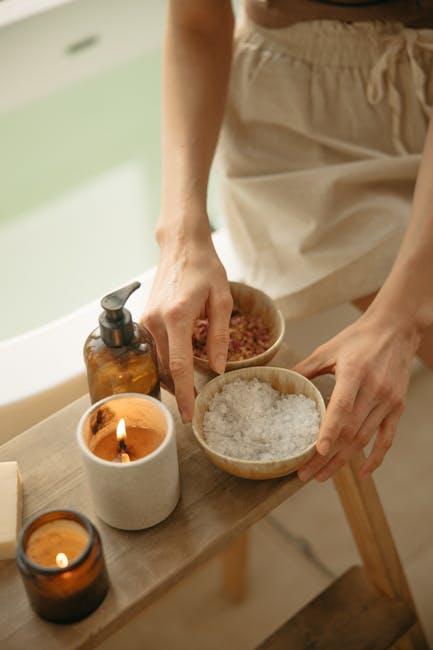Should DIY Exfoliation Techniques Be Avoided
In the quest for radiant and youthful skin, the allure of DIY exfoliation techniques often shines brightly. With promises of glowing complexions and budget-friendly solutions, these home remedies have carved out a niche in the world of skincare enthusiasts. Yet, beneath the surface of sugar scrubs and coffee grounds, questions linger. Are these do-it-yourself methods a gentle path to rejuvenation, or do they harbor hidden risks that could leave skin worse for wear? As the debate simmers, this article delves into the heart of DIY exfoliation, exploring the benefits and pitfalls to determine whether these homemade concoctions should be embraced or avoided. Join us as we peel back the layers of this beauty conundrum, seeking clarity amidst the grains and granules.
Unveiling the Truth: DIY Exfoliation Myths and Facts
When it comes to skincare, the internet is awash with DIY exfoliation techniques, promising everything from glowing skin to a miraculous reversal of time. But how much of this is fact, and how much is pure fiction? Let’s dive into the myths and facts surrounding DIY exfoliation.
- Myth: All natural ingredients are safe for your skin.
Fact: While ingredients like sugar and coffee grounds are popular in DIY scrubs, they can be too abrasive, leading to micro-tears in the skin. Always patch test and research before use. - Myth: Exfoliating daily will make your skin glow faster.
Fact: Over-exfoliation can strip your skin of its natural oils, causing dryness and irritation. Most skin types benefit from exfoliating 1-2 times a week. - Myth: Lemon juice is a great exfoliant for brightening skin.
Fact: The high acidity of lemon juice can disrupt your skin’s pH balance and increase sensitivity to sunlight, potentially causing more harm than good.
In the quest for flawless skin, it’s crucial to discern between effective DIY solutions and those that could inadvertently cause damage. While DIY exfoliation can be beneficial, it’s essential to approach it with caution and awareness.

Expert Insights: Navigating the Risks of Homemade Scrubs
Homemade scrubs have become a popular choice for many seeking a natural approach to skincare. However, these DIY exfoliants can carry risks that shouldn’t be overlooked. One primary concern is the abrasiveness of common ingredients such as sugar and salt, which can cause micro-tears in the skin. This damage can lead to irritation and make the skin more susceptible to environmental aggressors. Additionally, while natural, these ingredients lack the precision of commercially formulated products that ensure a balance between exfoliation and skin health.
To safely enjoy the benefits of homemade scrubs, consider the following expert tips:
- Patch Test First: Always test a small area of skin to check for adverse reactions.
- Mind the Ingredients: Use finely ground sugar or oats for a gentler scrub.
- Moisturize Afterwards: Follow up with a hydrating moisturizer to soothe the skin.
- Limit Usage: Restrict exfoliation to once or twice a week to prevent over-exfoliation.

Balancing Act: Finding the Safe Middle Ground in DIY Exfoliation
DIY exfoliation can be a delightful adventure into skincare, offering a hands-on approach to achieving that radiant glow. However, the quest for smooth skin can sometimes lead to overzealous scrubbing, which may cause more harm than good. Striking a balance is key to ensuring your skin remains healthy and vibrant. Here are some essential tips to find that safe middle ground:
- Know Your Skin Type: Tailor your exfoliation methods to suit your skin’s specific needs. Sensitive skin may require gentler ingredients like oatmeal, while oily skin might benefit from clay-based exfoliants.
- Mind the Frequency: Avoid the temptation to exfoliate daily. Instead, aim for once or twice a week, depending on your skin’s tolerance.
- Gentle Ingredients Matter: Opt for natural ingredients that are less likely to cause irritation, such as honey, yogurt, or finely ground coffee.
- Listen to Your Skin: Pay attention to how your skin reacts post-exfoliation. Redness, irritation, or increased sensitivity may be signs to dial back the intensity or frequency.
Balancing efficacy with safety ensures that your DIY exfoliation routine enhances your skin’s health rather than compromising it. This thoughtful approach can transform your skincare practice into a nurturing ritual that respects your skin’s unique characteristics.
Pro Tips: How to Safely Incorporate DIY Exfoliation into Your Routine
Incorporating DIY exfoliation into your skincare routine can be a rewarding experience, but it’s crucial to do so with caution to avoid irritation or damage. Here are some pro tips to help you exfoliate safely at home:
- Know Your Skin Type: Before diving into DIY methods, assess your skin type. Oily skin may benefit from more frequent exfoliation, while sensitive or dry skin requires a gentler approach.
- Choose the Right Ingredients: Opt for natural exfoliants like sugar, oatmeal, or ground coffee. These are less likely to cause irritation compared to harsher chemicals or abrasive materials.
- Patch Test First: Always perform a patch test on a small area of your skin to check for any adverse reactions. This is especially important when trying a new ingredient or mixture.
- Moderation is Key: Limit DIY exfoliation to once or twice a week to prevent over-exfoliating, which can lead to redness and sensitivity.
- Hydrate After Exfoliation: Follow up with a moisturizer to replenish your skin’s moisture barrier and soothe any potential irritation.
By following these tips, you can enjoy the benefits of smoother, healthier skin while minimizing the risk of harm from DIY exfoliation techniques.
Concluding Remarks
In the delicate dance between our skin and the world, exfoliation stands as both a friend and a potential foe. As we peel back the layers of this topic, it becomes clear that the decision to embrace or avoid DIY exfoliation techniques is as personal as the skin we inhabit. While some may find solace in the gentle embrace of natural ingredients, others may discover that their skin sings a different tune, requiring a more cautious approach.
Ultimately, the choice rests in the hands of each individual, guided by an understanding of their unique skin type and needs. Whether you choose to mix up a homemade scrub or seek professional guidance, remember that the journey to radiant skin is not a one-size-fits-all path. Listen to your skin’s whispers, and let it guide you toward the glow you seek.
As we close the chapter on this exploration, may you find empowerment in your skincare decisions, embracing the harmony between nature and nurture. And in this quest for luminous skin, may your choices be as radiant as the complexion you aspire to achieve.


